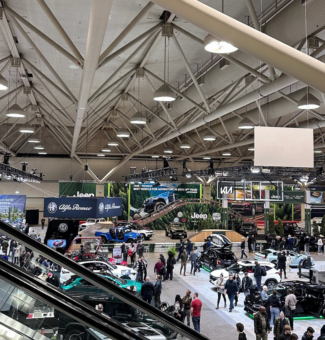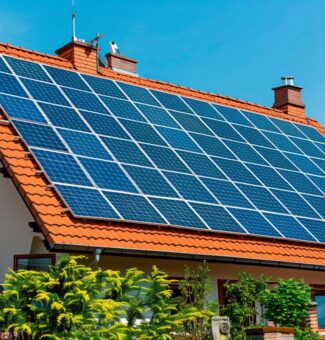Owning a home is exciting and can be an excellent investment, whether you’re planning to settle in or sell it before embarking on a new adventure. As you explore options of either building your own home or buying a new place, you’ll notice that each new year brings with it unique trends that shape the available options.
Last month, real-estate key player, Zillow, released its data-driven prediction of housing market trends for 2025. Their insights come from reviewing hundreds of listings, and evaluating both their performance and the associated keywords over time. One of the main trends in their research that caught our attention revolved around electric features. To us, this could mean one thing: EV chargers are becoming an essential part of a home, and that’s where we enter the conversation.
In this article, we’ll talk about some of these trends and guide you through some unique ways to incorporate them in your own home. Before we start, however, there are two ways to be more energy efficient: everyday behaviours, and construction and system features. In this article, we’ll focus on the latter.
More than electric features.
Zillow’s research revealed that future and present homeowners are trying to find more sustainable living options. Specifically, they’re looking for home batteries that can store excess energy from their main energy sources. Many are also investing in alternative energy solutions like solar and wind, which commonly offer batteries with installation.
There are other ways to make your home more energy efficient and increase its property value by incorporating more sustainable features.
Insulation matters.

All machines generate heat. While it’s hardly an issue for some of them, systems like HVAC and water heaters could lose most of their energy through wasted heat. There are two complementary ways to insulate your home:
- Add a layer of foil or fibreglass duct insulation and add them to the pipes in your system. For a step-by-step guide, review this article by This Old House.
- Ensure there are no air leaks in your home. Inspect your doors and windows for any gaps. Sealing these gaps will help ensure your home’s temperature remains as steady as possible without any drafts. This will reduce the overall strain on your thermostat and HVAC system.
Watch for phantom drain.
“Smart homes” have been a buzzword for years, often referring to highly technological houses that can be scheduled to address your needs before you have them. A simpler method can be just as powerful, though. Switching off power outlets not in use is key to a more efficient home. Why is this important? Nearly every appliance and charger continues to draw energy when not in use, contributing to unnecessary energy loss. Addressing this phantom drain can make your home more efficient and help lower your energy bills.

Making your home your energy base.
Electric vehicles are also becoming a mainstream trend. With increasing range and a growing number of models beyond luxury vehicles, EVs are more accessible than ever. Public charging infrastructure has also evolved, allowing EVs to charge in more places with a much shorter wait time. Some places even offer incentives for drivers who might consider switching to electric. Here’s where it gets interesting: level 2 home chargers can provide a full charge with a 240V setup.
However, like other appliances, standard home chargers can still draw power even when not in use. Smart EV chargers address this by offering remote control and scheduling features, ensuring no power is consumed unless your vehicle is plugged in. Adding a home EV charger, like Ivy Home, could increase your home’s value, and be a great amenity for home rentals and bed-and-breakfasts. Zillow reports that EV chargers appear 34% more on Zillow home sale listings today than a year ago.
This evolution can be taken one step further. According to a recent article at UK-based E-ON, you can incorporate a modern power grid into your home known as vehicle to grid (V2G). The process involves three key elements:
- Draw power using solar panels.
- Use that power to charge your car.
- Upon returning home, plug the vehicle back in – not to charge, but to power the house using the car’s battery!

Homes are becoming smarter and more efficient, and buyers are increasingly interested in buying homes with properties capable of generating and managing their own power. Taking steps to make your home more sustainable can have a host of benefits, from working toward a cleaner environment to greatly increasing your home’s property value.
Click here to read more about sustainable practices and how electric vehicles can take you one step closer to an energy-efficient home.
Join our electric community.
Be the first to hear about Ivy tips, promotions, and network updates.


